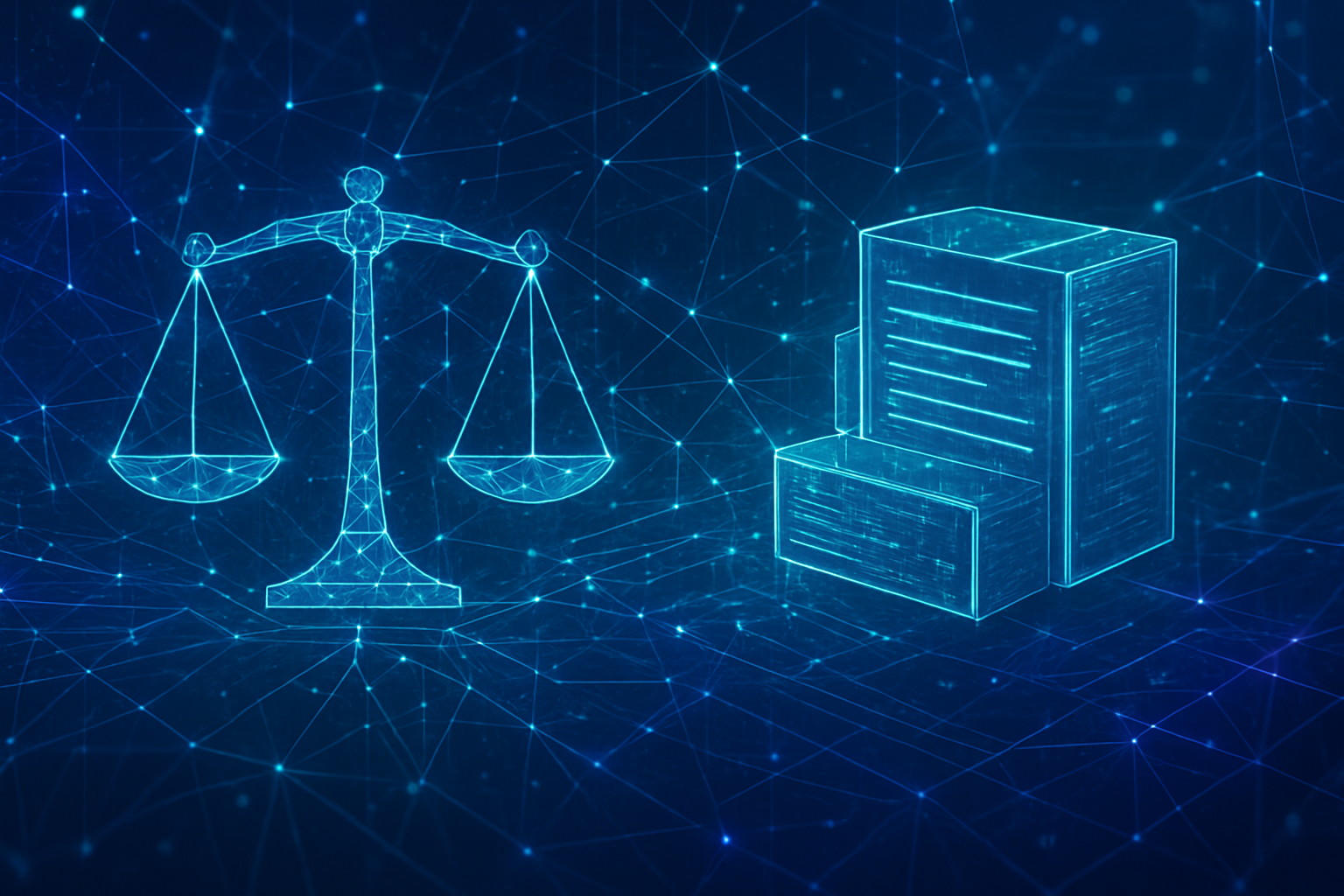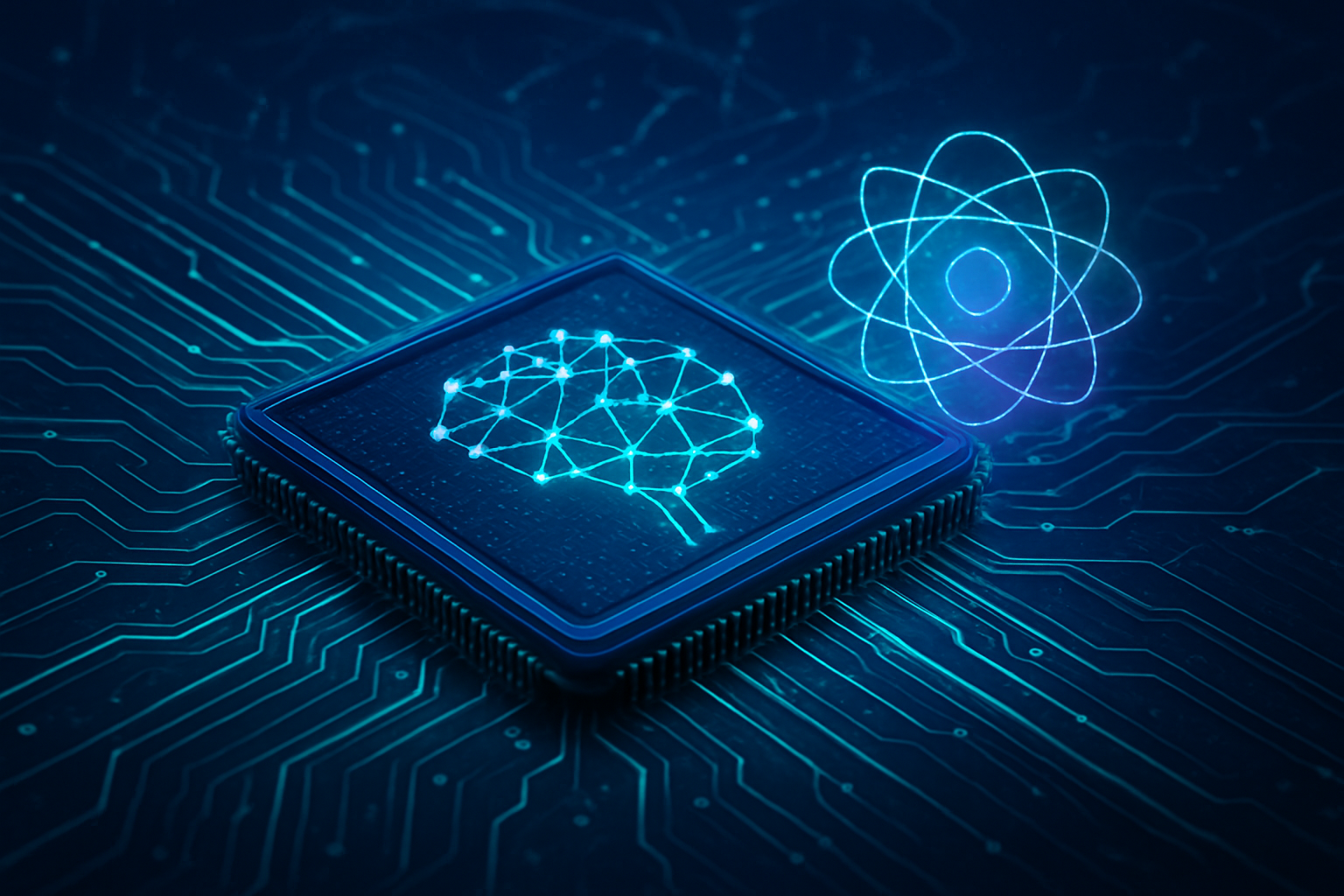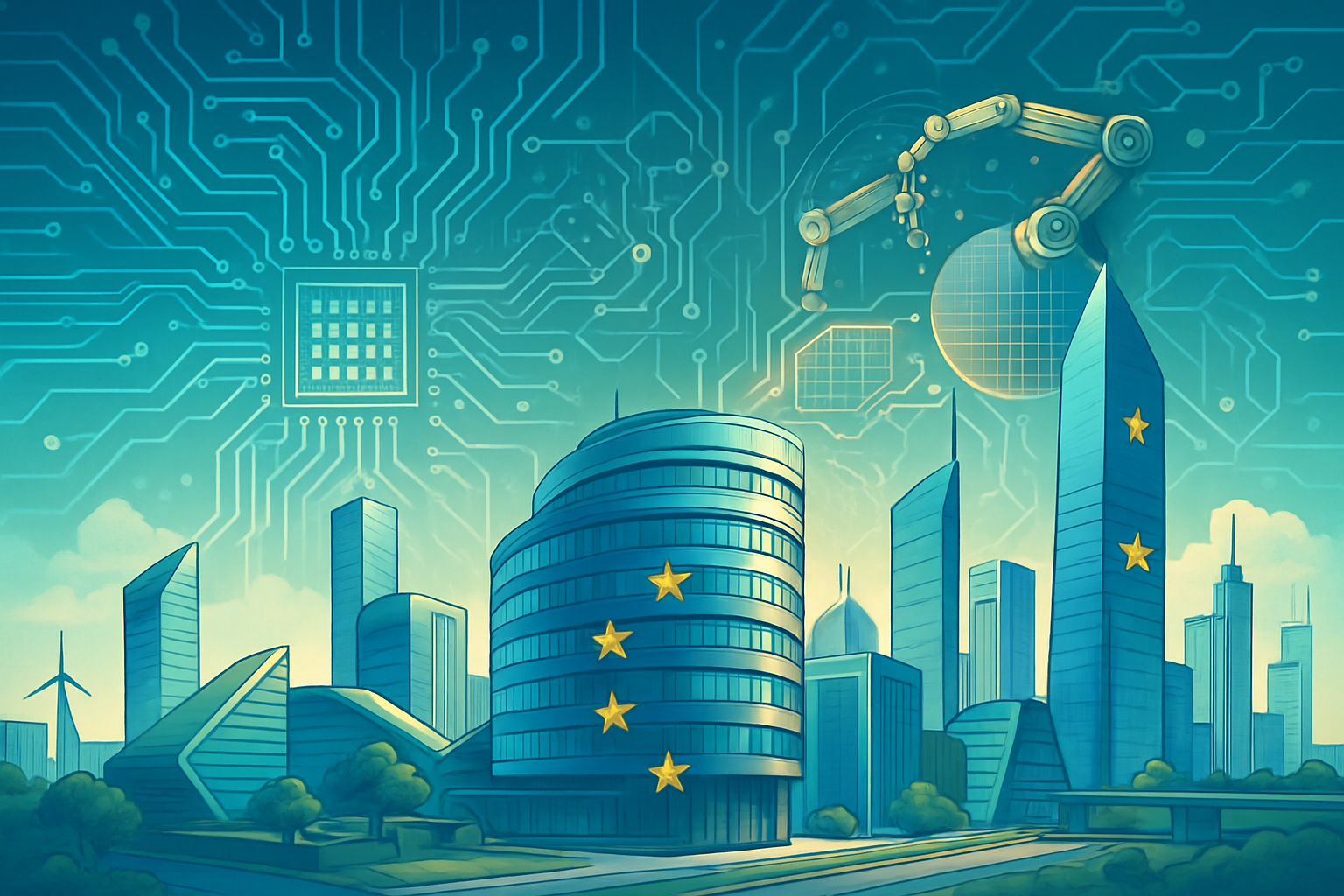China is embarking on an aggressive and financially robust campaign to fortify its domestic semiconductor industry, aiming for technological self-sufficiency amidst escalating global tensions and stringent export controls. At the heart of this ambitious strategy lies a comprehensive suite of financial incentives, notably including substantial energy bill reductions for data centers, coupled with a decisive mandate to exclusively utilize domestically produced AI chips. This strategic pivot is not merely an economic maneuver but a profound declaration of national security and technological sovereignty, poised to reshape global supply chains and accelerate the decoupling of the world's two largest economies in the critical domain of advanced computing.
The immediate significance of these policies, which include guidance barring state-funded data centers from using foreign-made AI chips and offering up to 50% cuts in electricity bills for those that comply, cannot be overstated. These measures are designed to drastically reduce China's reliance on foreign technology, particularly from US suppliers, while simultaneously nurturing its burgeoning domestic champions. The ripple effects are already being felt, signaling a new era of intense competition and strategic realignment within the global semiconductor landscape.
Policy Mandates and Economic Catalysts Driving Domestic Chip Adoption
Beijing's latest directives represent one of its most assertive steps towards technological decoupling. State-funded data centers are now explicitly prohibited from utilizing foreign-made artificial intelligence (AI) chips. This mandate extends to projects less than 30% complete, requiring the removal or replacement of existing foreign chips, while more advanced projects face individual review. This follows earlier restrictions in September 2024 that barred major Chinese tech companies, including ByteDance (NASDAQ: BTD), Alibaba (NYSE: BABA), and Tencent (HKG: 0700), from acquiring advanced AI chips like Nvidia's (NASDAQ: NVDA) H20 GPUs, citing national security concerns. The new policy explicitly links eligibility for significant financial incentives to the exclusive use of domestic chips, effectively penalizing continued reliance on foreign vendors.
To sweeten the deal and mitigate the immediate economic burden of switching to domestic alternatives, China has significantly increased subsidies, offering up to a 50% reduction in electricity bills for leading data centers that comply with the domestic chip mandate. These enhanced incentives are specifically directed at major Chinese tech companies that have seen rising electricity costs after being restricted from acquiring Nvidia's more energy-efficient chips. Estimates suggest that Chinese-made processors from companies like Huawei (SHE: 002502) and Cambricon (SSE: 688256) consume 30-50% more power than Nvidia's H20 chips for equivalent computational output, making these energy subsidies crucial for offsetting higher operational expenses.
The exclusive domestic chip requirement is a non-negotiable condition for accessing these significant energy savings; data centers operating with foreign chips are explicitly excluded. This aggressive approach is not uniform across the nation, with interprovincial competition driving even more attractive incentive packages. Provinces with high concentrations of data centers, such as Gansu, Guizhou, and Inner Mongolia, are offering subsidies sometimes sufficient to cover a data center's entire operating cost for about a year. Industrial power rates in these regions, already lower, are further reduced by these new subsidies to approximately 0.4 yuan ($5.6 cents) per kilowatt-hour, highlighting the immense financial leverage being applied.
This strategy marks a significant departure from previous, more gradual encouragement of domestic adoption. Instead of merely promoting local alternatives, the government is now actively enforcing their use through a combination of restrictions and compelling financial rewards. This two-pronged approach aims to rapidly accelerate the market penetration of Chinese chips and establish a robust domestic ecosystem, distinguishing it from earlier, less forceful initiatives that often saw foreign technology retain a dominant market share due to perceived performance or cost advantages.
Reshaping the Competitive Landscape: Winners and Losers in the Chip War
The repercussions of China's aggressive semiconductor policies are already profoundly impacting the competitive landscape, creating clear winners and losers among both domestic and international players. Foreign chipmakers, particularly those from the United States, are facing an existential threat to their market share within China's critical state-backed infrastructure. Nvidia (NASDAQ: NVDA), which once commanded an estimated 95% of China's AI chip market in 2022, has reportedly seen its share in state-backed projects plummet to near zero, with limited prospects for recovery. This dramatic shift underscores the vulnerability of even dominant players to nationalistic industrial policies and geopolitical tensions.
Conversely, China's domestic semiconductor firms are poised for unprecedented growth and market penetration. Companies like Huawei (SHE: 002502), Cambricon (SSE: 688256), and Enflame are direct beneficiaries of these new mandates. With foreign competitors effectively sidelined in lucrative state-funded data center projects, these domestic champions are gaining guaranteed market access and a substantial increase in demand for their AI processors. This surge in orders provides them with crucial capital for research and development, manufacturing scale-up, and talent acquisition, accelerating their technological advancement and closing the gap with global leaders.
Chinese tech giants such as ByteDance (NASDAQ: BTD), Alibaba (NYSE: BABA), and Tencent (HKG: 0700), while initially facing challenges due to the restrictions on advanced foreign chips, now stand to benefit from the energy subsidies. These subsidies directly alleviate the increased operational costs associated with using less energy-efficient domestic chips. This strategic support helps these companies maintain their competitive edge in AI development and cloud services within China, even as they navigate the complexities of a fragmented global supply chain. It also incentivizes them to deepen their collaboration with domestic chip manufacturers, fostering a more integrated and self-reliant national tech ecosystem.
The competitive implications extend beyond chip manufacturers to the broader tech industry. Companies that can rapidly adapt their hardware and software stacks to integrate Chinese-made chips will gain a strategic advantage in the domestic market. This could lead to a bifurcation of product development, with Chinese companies optimizing for domestic hardware while international firms continue to innovate on global platforms. The market positioning for major AI labs and tech companies will increasingly depend on their ability to navigate these diverging technological ecosystems, potentially disrupting existing product roadmaps and service offerings that were previously built on a more unified global supply chain.
The Broader Geopolitical and Economic Implications
China's aggressive push for semiconductor self-sufficiency is not merely an industrial policy; it is a foundational pillar of its broader geopolitical strategy, deeply intertwined with national security and technological sovereignty. This initiative fits squarely within the context of the escalating tech war with the United States and other Western nations, serving as a direct response to export controls designed to cripple China's access to advanced chip technology. Beijing views mastery over semiconductors as critical for national security, economic resilience, and maintaining its trajectory as a global technological superpower, particularly under the ambit of its "Made in China 2025" and subsequent Five-Year Plans.
The impacts of these policies are multifaceted. Economically, they are driving a significant reallocation of resources within China, channeling hundreds of billions of dollars through mechanisms like the "Big Fund" (National Integrated Circuit Industry Investment Fund) and its latest iteration, "Big Fund III," which committed an additional $47.5 billion in May 2024. This dwarfs direct incentives provided by the US CHIPS and Science Act, underscoring the scale of China's commitment. While fostering domestic growth, the reliance on currently less energy-efficient Chinese chips could, in the short term, potentially slow China's progress in high-end AI computing compared to global leaders who still have access to the most advanced international chips.
Potential concerns abound, particularly regarding global supply chain stability and the risk of technological fragmentation. As China entrenches its domestic ecosystem, the global semiconductor industry could bifurcate, leading to parallel development paths and reduced interoperability. This could increase costs for multinational corporations, complicate product development, and potentially slow down global innovation if critical technologies are developed in isolation. Furthermore, the aggressive talent recruitment programs targeting experienced semiconductor engineers from foreign companies raise intellectual property concerns and intensify the global battle for skilled labor.
Comparisons to previous AI milestones reveal a shift from a focus on foundational research and application to a more nationalistic, hardware-centric approach. While earlier milestones often celebrated collaborative international breakthroughs, China's current strategy is a stark reminder of how geopolitical tensions are now dictating the pace and direction of technological development. This strategic pivot marks a significant moment in AI history, underscoring that the future of artificial intelligence is inextricably linked to the control and production of its underlying hardware.
The Road Ahead: Challenges and Breakthroughs on the Horizon
The path forward for China's domestic semiconductor industry is fraught with both immense challenges and the potential for significant breakthroughs. In the near term, the primary challenge remains the gap in advanced manufacturing processes and design expertise compared to global leaders like Taiwan Semiconductor Manufacturing Company (TSMC) (NYSE: TSM) and Samsung (KRX: 005930). While Chinese firms are making rapid strides, particularly in mature nodes, achieving parity in cutting-edge process technologies (e.g., 3nm, 2nm) requires colossal investment, sustained R&D, and access to highly specialized equipment, much of which is currently restricted by export controls. The reliance on less energy-efficient domestic chips will also continue to be a short-to-medium term hurdle, potentially impacting the cost-effectiveness and performance scalability of large-scale AI deployments.
However, the sheer scale of China's investment and the unified national effort are expected to yield substantial progress. Near-term developments will likely see further optimization and performance improvements in existing domestic AI chips from companies like Huawei and Cambricon, alongside advancements in packaging technologies to compensate for limitations in node size. We can also anticipate a surge in domestic equipment manufacturers and material suppliers, as China seeks to localize every segment of the semiconductor value chain. The intense domestic competition, fueled by government mandates and incentives, will act as a powerful catalyst for innovation.
Looking further ahead, the long-term vision involves achieving self-sufficiency across the entire semiconductor spectrum, from design tools (EDA) to advanced manufacturing and packaging. Potential applications and use cases on the horizon include the widespread deployment of domestically powered AI in critical infrastructure, autonomous systems, advanced computing, and a myriad of consumer electronics. This would create a truly independent technological ecosystem, less vulnerable to external pressures. Experts predict that while full parity with the most advanced global nodes might take another decade or more, China will significantly reduce its reliance on foreign chips in critical sectors within the next five years, particularly for applications where performance is "good enough" rather than bleeding-edge.
The key challenges that need to be addressed include fostering a truly innovative culture that can compete with the world's best, overcoming the limitations imposed by export controls on advanced lithography equipment, and attracting and retaining top-tier talent. What experts predict will happen next is a continued acceleration of domestic production, a deepening of indigenous R&D efforts, and an intensified global race for semiconductor supremacy, where technological leadership becomes an even more critical determinant of geopolitical power.
A New Era of Technological Sovereignty and Global Realignments
China's strategic initiatives and multi-billion dollar financial incentives aimed at boosting its domestic semiconductor industry represent a watershed moment in the global technology landscape. The key takeaways are clear: Beijing is unequivocally committed to achieving technological self-sufficiency, even if it means short-term economic inefficiencies and a significant reshaping of market dynamics. The combination of stringent mandates, such as the ban on foreign AI chips in state-funded data centers, and generous subsidies, including up to 50% cuts in electricity bills for compliant data centers, underscores a comprehensive and forceful approach to industrial policy.
This development's significance in AI history cannot be overstated. It marks a decisive shift from a globally integrated technology ecosystem to one increasingly fragmented along geopolitical lines. For years, the AI revolution benefited from a relatively free flow of hardware and expertise. Now, the imperative of national security and technological sovereignty is compelling nations to build parallel, independent supply chains, particularly in the foundational technology of semiconductors. This will undoubtedly impact the pace and direction of AI innovation globally, fostering localized ecosystems and potentially leading to divergent technological standards.
The long-term impact will likely see a more resilient, albeit potentially less efficient, Chinese semiconductor industry capable of meeting a significant portion of domestic demand. It will also force international companies to re-evaluate their China strategies, potentially leading to further decoupling or the development of "China-for-China" products. What to watch for in the coming weeks and months includes the practical implementation details of the energy subsidies, the performance benchmarks of new generations of Chinese AI chips, and the responses from international governments and companies as they adapt to this new, more fractured technological world order.
This content is intended for informational purposes only and represents analysis of current AI developments.
TokenRing AI delivers enterprise-grade solutions for multi-agent AI workflow orchestration, AI-powered development tools, and seamless remote collaboration platforms.
For more information, visit https://www.tokenring.ai/.





